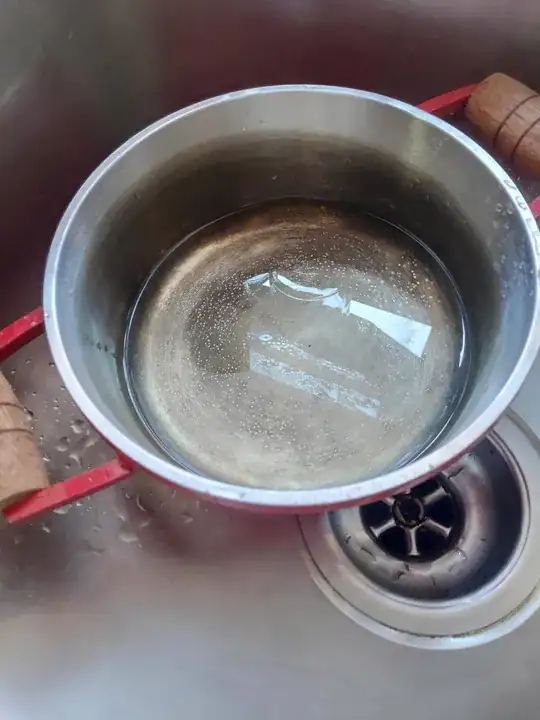I bought this pot a few weeks ago. I've only used it a couple times since, but yesterday I decided to boil some eggs in it.
I ended up forgetting about them for a minute, when I came back the water was not enough to cover them anymore. About 10% of the eggs surface were exposed to air, however, the pot was this very dark color.
I've never seen a pot blacken like that, at most something like a kettle if you let it run dry for a while.
The pot has what looks like a machined bottom, with some casting bubbles that you can see as the light spots at the bottom. Which leads me to believe this might have been caused by scrubbing, given the strange uneveness? But the coloring only manifested once I used it again.
By weight, and the fact it is so poorly cast, I think it might be aluminium, but there are no markings specifying the material of the pot. I even went back to the store and the label doesn't specify either.

